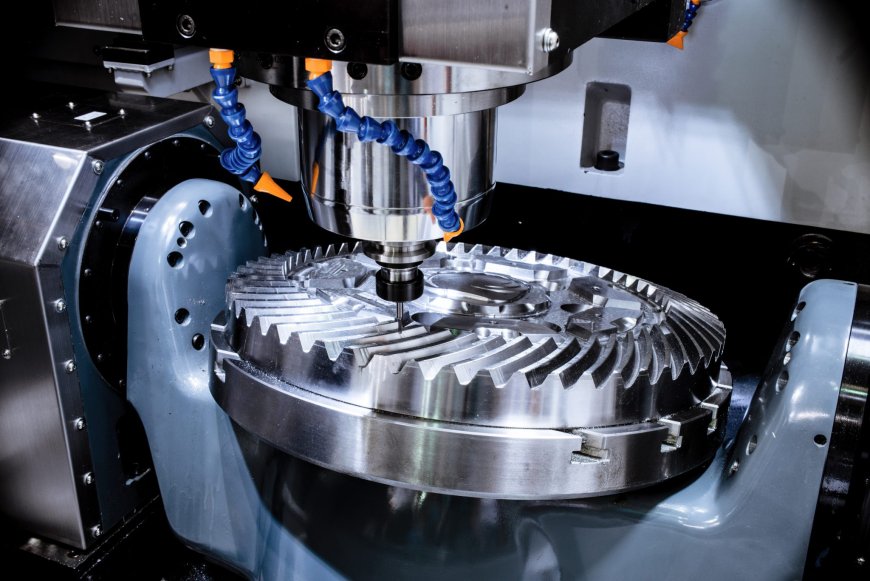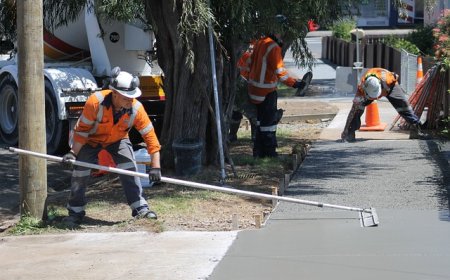Introduction
In today’s world of manufacturing, efficiency, precision, and versatility are critical factors that determine the success of production processes. One of the most advanced technologies in the manufacturing sector, CNC machining (Computer Numerical Control machining), has revolutionized the way complex parts and components are created. Whether it’s aerospace, automotive, medical devices, or electronics, CNC machining plays a central role in ensuring that products are made to exact specifications.
This article aims to provide an in-depth overview of CNC machining, how it works, the various types of CNC machines, its benefits, and the industries that rely on it for high-quality production. Whether you're new to the concept or seeking a deeper understanding of its applications, this guide will shed light on the remarkable advantages and capabilities of CNC machining.
What is CNC Machining?
CNC machining is a manufacturing process where a computer controls the movement and operation of machine tools. Using pre-programmed software (usually in the form of G-code), CNC machines can perform a wide variety of operations, such as cutting, milling, turning, drilling, and grinding, to produce precise parts and components.
Unlike traditional machining, where human operators manually guide the machine tool, CNC machining automates these operations. This leads to more consistent, repeatable, and accurate results, making it ideal for producing parts that require extremely tight tolerances and complex geometries.
Key Components of CNC Machining:
- CNC Machine: The physical machine that performs the work (e.g., CNC mill, lathe, router).
- Controller: The computer that runs the software and processes the G-code instructions.
- Tooling: The cutting or shaping tools used by the CNC machine to alter the workpiece.
- Workpiece: The material being machined, which can be metal, plastic, wood, or composites.
How Does CNC Machining Work?
The process of CNC machining involves several key steps, each crucial to ensuring the production of high-quality, precise parts. Here is a breakdown of how it works:
1. Designing the Part (CAD Software)
The first step in the CNC machining process is designing the part. This is done using CAD (Computer-Aided Design) software like AutoCAD, SolidWorks, or Fusion 360. These programs allow engineers and designers to create detailed 2D or 3D models of the part with all of the necessary dimensions, tolerances, and specifications.
2. Converting to G-Code (CAM Software)
Once the design is complete, it is converted into machine-readable code called G-code using CAM (Computer-Aided Manufacturing) software. G-code is a programming language that directs the CNC machine on how to move, which tools to use, and the specific cutting instructions. It essentially tells the machine what actions to take at each step of the process.
3. Setting Up the CNC Machine
After the G-code is generated, the next step is to prepare the CNC machine for operation. This involves:
- Loading the workpiece onto the machine.
- Selecting the appropriate cutting tools (e.g., drills, end mills, lathes).
- Calibrating the machine’s settings, including speed, feed rate, and depth of cut.
4. Machining the Part
Once the setup is complete, the CNC machine automatically follows the programmed instructions from the G-code to cut, mill, drill, or shape the workpiece. Depending on the type of CNC machine, this process can involve multiple axes of movement—usually 3, 4, or 5 axes.
5. Post-Processing and Quality Control
After the machining is finished, the part undergoes post-processing, which may include polishing, cleaning, or applying coatings. The part is then inspected using various measurement tools to ensure that it meets the required specifications and tolerances.
Types of CNC Machines
CNC machines come in different types and configurations, each designed for specific tasks. Some of the most common types include:
1. CNC Milling Machines
CNC milling machines use rotating cutters to remove material from a stationary workpiece. These machines are versatile and can perform a variety of operations, such as drilling, boring, and contouring. Milling machines can be configured with 3, 4, or 5 axes, enabling the creation of complex parts with intricate geometries.
2. CNC Lathes
CNC lathes are used to shape cylindrical parts by rotating the workpiece against a cutting tool. The tool removes material to produce round components, such as shafts, rings, or rods. CNC lathes are essential for turning operations like facing, boring, and threading.
3. CNC Routers
CNC routers are specialized machines for cutting, engraving, and shaping softer materials such as wood, plastic, and foam. These machines are often used in woodworking, sign-making, and plastic fabrication. CNC routers have large worktables, which are ideal for processing large sheets of material.
4. CNC Drilling Machines
CNC drilling machines are used to create precise holes in a workpiece. They are often used in industries where hole placement and size are crucial, such as electronics, aerospace, and automotive manufacturing.
5. CNC EDM Machines
Electrical Discharge Machining (EDM) is a specialized CNC technique that uses electrical sparks to erode material from the workpiece. This process is particularly useful for working with hard materials such as tool steel and tungsten carbide, and is commonly used in mold making, aerospace, and medical device manufacturing.
6. CNC Laser Cutters
CNC laser cutters use high-powered laser beams to cut, engrave, or mark materials. Laser cutting is ideal for producing intricate shapes with a high level of precision, especially for metals, plastics, and ceramics. Laser cutters are widely used in industries such as automotive, aerospace, and electronics.
7. CNC Plasma Cutters
CNC plasma cutters use a plasma torch to cut through electrically conductive materials like steel and aluminum. Plasma cutting is known for its speed and is commonly used for cutting thick sheets of metal in construction, shipbuilding, and metal fabrication.
Advantages of CNC Machining
CNC machining offers a wide array of benefits compared to traditional manual machining. Here are some key advantages:
1. Precision and Accuracy
CNC machining is known for its high precision, often achieving tolerances as tight as 0.0001 inches. This level of accuracy is critical for industries like aerospace, automotive, and medical device manufacturing, where small variations in part dimensions can lead to catastrophic failures.
2. Repeatability
CNC machines can produce identical parts with consistent quality every time, making them ideal for high-volume production. Once the machine is programmed and set up, it can run autonomously and produce thousands of identical parts without deviating from the original specifications.
3. Complexity and Flexibility
CNC machines can produce parts with highly intricate geometries that would be difficult or impossible to achieve using manual methods. The ability to machine parts in 3D space allows manufacturers to create complex shapes and designs quickly and efficiently.
4. Increased Production Speed
Since CNC machines operate automatically, they can significantly reduce manufacturing times. Once set up, they can run continuously, 24/7, producing parts with minimal downtime. This is particularly advantageous for high-volume production.
5. Reduced Human Error
Because CNC machines are controlled by computers, the potential for human error is minimized. The machine follows precise instructions, ensuring that the final product meets the required specifications every time.
6. Lower Labor Costs
Once a CNC machine is set up and programmed, it requires minimal human intervention. This reduces labor costs and allows manufacturers to focus their workforce on higher-value tasks, such as maintenance and quality control.
7. Cost-Effectiveness for Large Runs
While CNC machines may have higher upfront costs compared to traditional manual machines, they become cost-effective for large production runs due to their speed and precision. The reduced need for manual labor and retooling also contributes to overall cost savings.
Industries That Benefit from CNC Machining
CNC machining is a cornerstone technology for a wide range of industries that require precision parts. Some of the key industries that benefit from CNC machining include:
1. Aerospace
The aerospace industry demands extremely high precision for components such as turbine blades, engine parts, and airframes. CNC machining enables the production of these critical parts with tight tolerances and minimal errors, ensuring the safety and reliability of aircraft.
2. Automotive
CNC machining plays a vital role in the automotive sector by producing engine components, transmission systems, suspension parts, and custom performance parts. The ability to produce high-precision, durable parts is essential for ensuring the performance and safety of vehicles.
3. Medical Devices
The medical device industry relies on CNC machining to produce surgical instruments, implants, prosthetics, and diagnostic equipment. The technology’s ability to produce highly precise, biocompatible components is critical in meeting regulatory standards and ensuring patient safety.
4. Electronics
Electronics manufacturers use CNC machining to produce components like heat sinks, housings, and connectors. The technology allows for the production of intricate parts needed for consumer electronics, medical devices, and computer hardware.
5. Tooling and Mold Making
CNC machining is essential for creating precision molds and tooling used in injection molding, die-casting, and stamping. The ability to create complex molds and dies quickly and accurately is crucial for mass production in various industries.
6. Defense
The defense industry relies on CNC machining for producing highly complex, durable parts for military vehicles, weapons systems, and other defense-related equipment. CNC machining is essential for meeting the stringent requirements and standards needed for military applications.
Conclusion
CNC machining has revolutionized the manufacturing industry by enabling the production of precise, repeatable, and complex parts with minimal human intervention. Its flexibility, efficiency, and ability to work with a wide variety of materials have made it indispensable in industries such as aerospace, automotive, medical devices, and electronics. As technology continues to evolve, CNC machining will remain at the forefront of manufacturing innovation, driving progress in both precision engineering and mass production.
























